Oak Wilt
July, 2024: Time to check your trees for Oak Wilt! If you have any concern about your tree(s), please notify the Parks Committee at parks@bouldincreek.org and consider hiring an oak-wilt ISA certified arborist to advise you. The Texas ISA Chapter maintains a list that can be searched by location: https://isatexas.com/for-the-public/texas-oak-wilt-qualified-arborists/
Bouldin Creek Neighborhood Alert: Oak Wilt Discovered
April, 2023: A case of Oak Wilt has been confirmed in a Live Oak in the 800 block of Christopher Street. Adjacent neighbors are asked to take immediate action and call a certified arborist to inspect their oak trees. Healthy trees should be injected with a fungicide to inoculate them a.s.a.p. Please notify the BCNA Parks Committee of your findings: parks@bouldincreek.org
From Texas A&M Forest Service: “Oak wilt, one of the most destructive tree diseases in the United States, [….] is an infectious disease caused by the fungus Bretziella fagacearum, which invades and disables the water-conducting system (xylem) in oaks. All oaks can be infected by the fungus that causes oak wilt; however, some oak species are affected more than others. The successful management of oak wilt depends on correct diagnosis and an understanding of how the pathogen and different oak species interact.”
Spread of Oak Wilt
The fungus is spread above ground by nitidulid beetles that carry sap from one tree to another, or underground by connected root systems. It can also be spread by moving infected (fire) wood from one area to another. Spread through improperly infected tree trimming equipment is rare, but can happen.
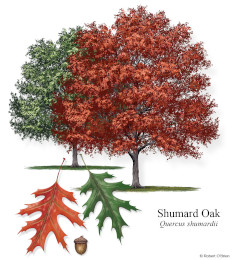 | 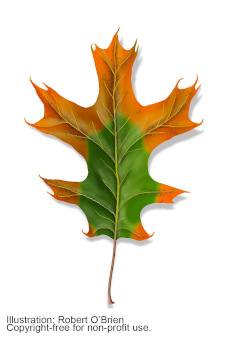 | Texas Red Oaks are most susceptible to the fungus. Infection can be spotted from a distance by bright, autumn-like coloration in contrast to the surrounding greenery. Infected trees never survive and often die within 4 to 6 weeks following the initial appearance of symptoms. |
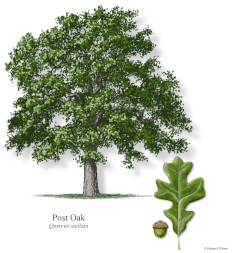 | White Oaks/Post Oaks are more tolerant of the fungus, but can still be infected. Fungus generally does not spread to adjacent trees, but occasionally will. | |
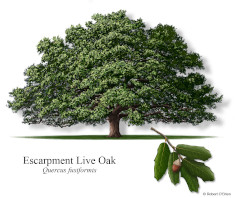 | 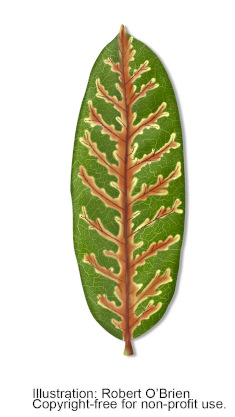 | Live Oaks face intermediate danger, but are most seriously affected because of their connected root systems which facilitates spreading. Can be identified by loss of canopy and green leaves with clearly visible brown veins. Trees can defoliate within 3-6 month of infection and die; others will linger for years. |
Treatment
Once a tree is infected, it can generally not be saved.; however, the infestation can be limited by
- Trenching around affected area to disrupt root connections – this condemns the trees inside the trenched area
- Injecting a fungicide into adjacent healthy trees to prevent their infection. The fungicide might also extend the life of newly infected trees, but it will not cure them.
Prevention
Infected red oaks should be cut down and burned, buried, or chipped soon after discovery to prevent fungal mats that may form on these trees the following spring.
Tree trimming should be avoided February through June when sap-carrying beetles are most active History. The best time to trim is in the coldest part of the winter or the hottest of the summer. At whatever time it is done, though, it is essential to paint fresh wounds immediately.
Next Steps
The Parks Committee will hire a certified arborist to assess how widely the infestation has spread and design a treatment plan. Neighbors who have oak trees on their property or nearby are asked to inspect them for signs of disease.
BCNA Oak Wilt History
Oak Wilt was discovered once before in mid-1995 in the 800 blocks of Christopher and Columbus. BCNA worked with a City of Austin Forester to identify the area and devise an appropriate treatment plan.
In the summer of 1996, we hired a contractor to dig a 4’ deep x 2’ wide trench around the affected area: 815 to 805 Christopher; 814 to 806 Columbus and in the Bouldin Avenue right-of-way
Find more resources on the Texas A&M Forest Service TEXAS OAK WILT site.
